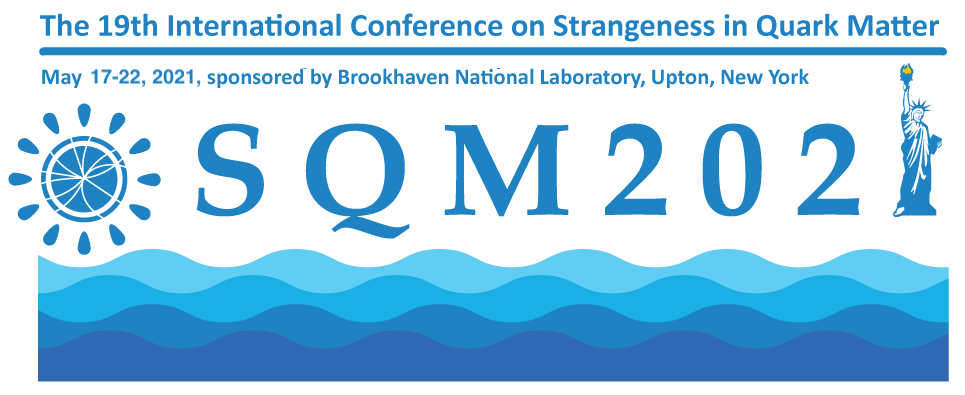Speaker
Description
The large values and the constituent-quark-number (NCQ) scaling of the elliptic flow of low-$p_T$ $D$ mesons imply that charm quarks, initially produced through hard processes, might be partially thermalized through the strong interactions with the quark-gluon plasma (QGP) in high-energy heavy-ion collisions.
To quantify the degree of thermalization of low-$p_T$ charm quarks, we compare the $D^0$ meson spectra and elliptic flow from a hydrodynamic model to the experimental data as well as transport model simulations.
We use an effective charm chemical potential at the freeze-out temperature to account for the initial charm quark production from hard processes and assume that they are thermalized in local comoving frame of the medium before freeze-out.
$D^0$ mesons are sampled statistically from the freeze-out hyper-surface of the expanding QGP as described by the event-by-event (3+1)D viscous hydrodynamic model CLVisc.
Both hydrodynamic and transport model can describe the elliptic flow of $D^0$ mesons at $p_T<3$ GeV/$c$ as measured in Au+Au collisions at $\sqrt{s_{NN}}=200$ GeV.
Though the experimental data on $D^0$ spectra are consistent with the hydrodynamic result at small $p_T\sim 1$ GeV/$c$, they deviate from the hydrodynamic model at high transverse momentum $p_T>2$ GeV/$c$.
The diffusion and parton energy loss mechanisms in the transport model can describe the measured spectra reasonably well within the theoretical uncertainty.
Our comparative study indicates that charm quarks only approach to local thermal equilibrium at small $p_T$ even though they acquire sizable elliptic flow that is comparable to light-quark hadrons at both small and intermediate $p_T$.
